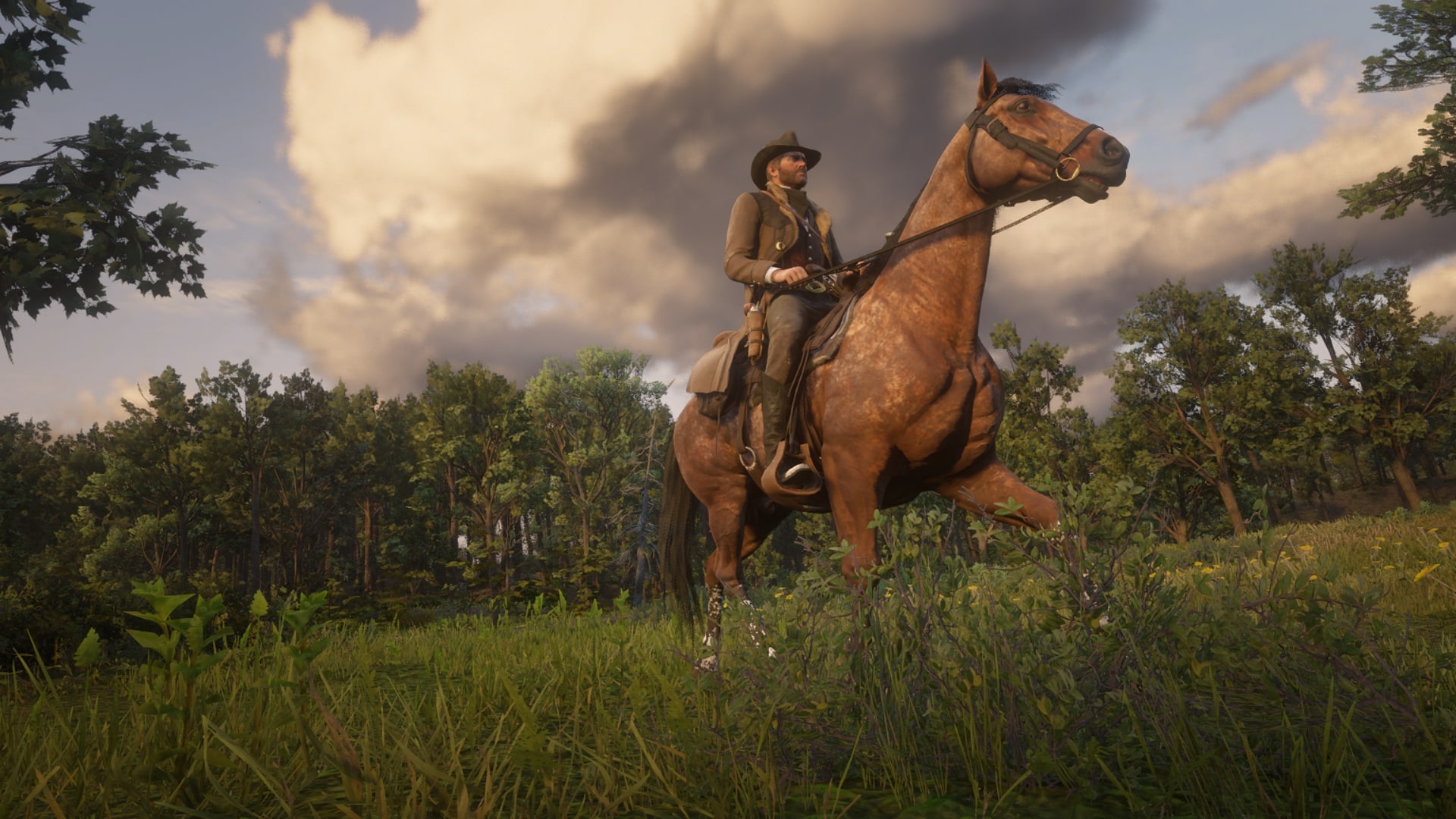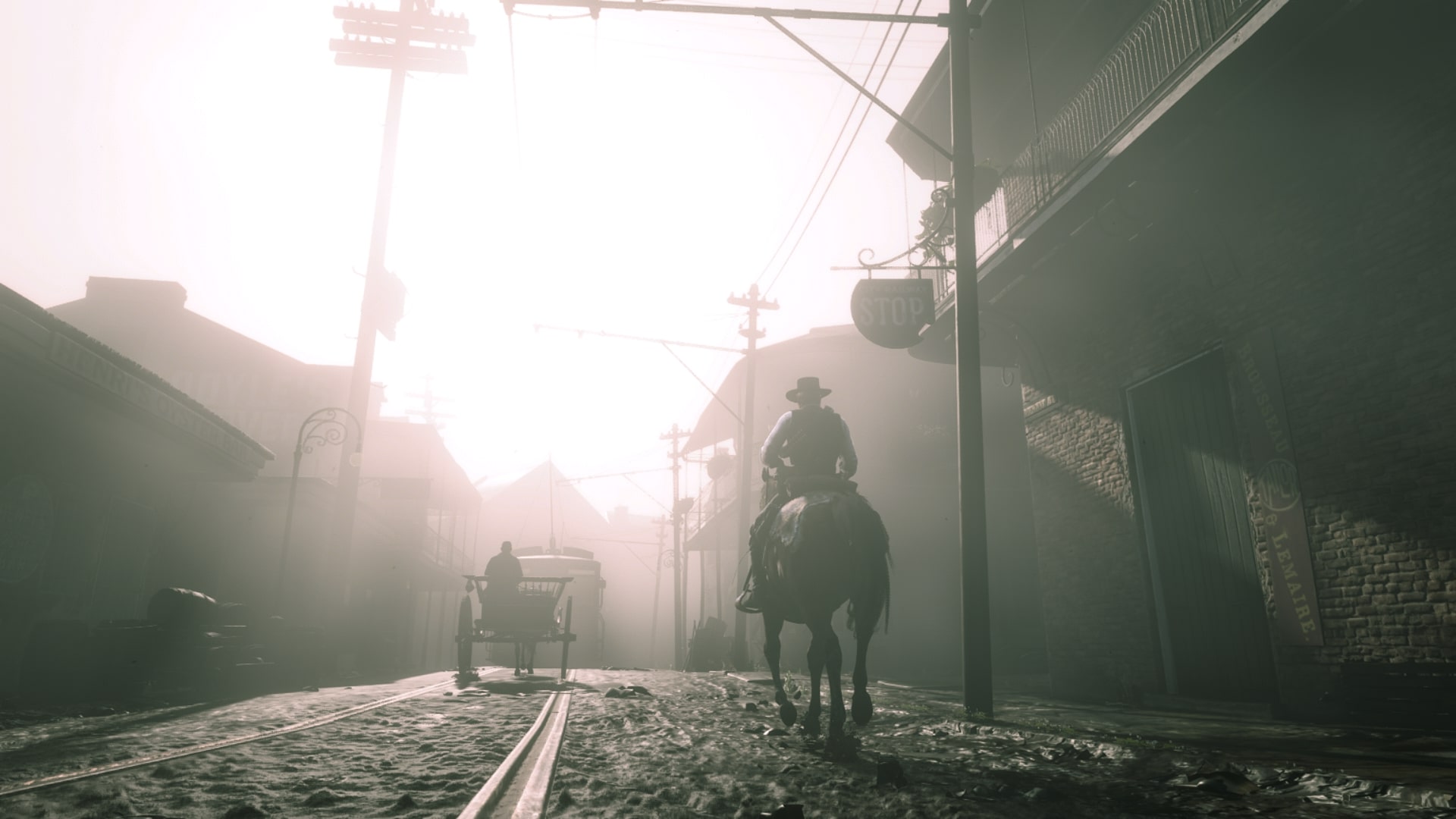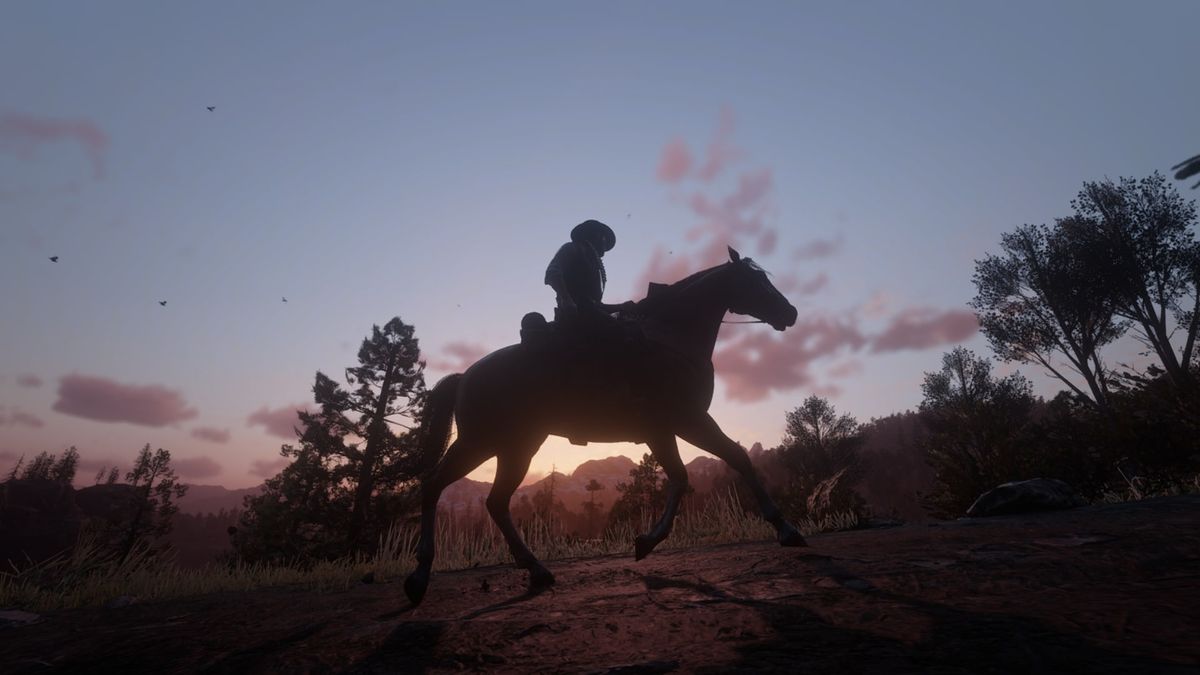I didn’t unlock fast travel in Red Dead Redemption 2 until halfway through chapter three. It was an accident – I’d managed to amass a healthy stash of money, and after maxing out the rest of the gang’s lodgings, stashes, and other necessary accouterments, I finally bit the shotgun slug and invested in Arthur’s. Lo and behold, a fast travel map appeared, nailed to the wood of his caravan like a tempting will-o-the-wisp on a foggy night in the bayou. I used it once or twice and then never did so again.
To my memory, the game didn’t indicate that Arthur’s second upgrade would unlock fast travel in RDR 2. All I wanted was a ready stash of bullets to grab every now and again, though I’d always found plenty to loot from dead O’Driscolls, Pinkertons, and LeMoyne Raiders alike. Once upon a time I might have let out a victorious cheer, but for the first time in perhaps ever, I realized that I had not been missing this staple RPG-like mechanic at all. It speaks to a broader discussion these days about the role of fast travel in games, but it’s also a testament to the immersive storytelling power that comes with stopping to smell the horse manure for once.
Let’s go, boy

Red Dead Redemption 2 has been a formative experience for me so far. As someone who never had much of an interest in the whole cowboy fantasy, I can’t believe that I’d rather ride for twenty realtime minutes across the vast Wild West than warp myself across the map.
RDR 2 may be an action-adventure sandbox game, but fast travel has always been my bread and butter in pretty much every open-world RPG I’ve ever played. I even abuse the portals in Baldur’s Gate 3 to get from one end of the city to the other, just because I can. It’s such a broadly-used mechanic that I take for granted most of the time, especially when I just don’t feel like wading through scores of wilderness. The lack of an immediate fast travel option in Red Dead Redemption 2 came as a huge surprise to me at first for that very same reason. After brawling in a saloon with Lenny near the start of Chapter 2, I was bewildered by the fact that I couldn’t just click on Horseshoe Overlook to get there. After frustratingly trying to hitch a ride from the locked carriage signpost, I set out on foot from Valentine.
I’ll admit that I struggled with the slower pace of Red Dead Redemption 2 in general at first. Arthur doesn’t walk very fast in camp, even when mashing the A button on my controller, and playing this off the back of a Far Cry 5 replay, I couldn’t believe how long it takes him to loot corpses. Even after purchasing my first proper horse – a stunning brown racer breed I lovingly named Rambo – I was mystified by how I was meant to get all the way there from all the way over here. Zooming out to view the whole map in its largely unexplored glory, I was baffled. Was this just how things were going to be from here on out?

The frustration very nearly made me put down the game entirely. Eventually, though, the more languid, realistic pace of Arthur’s journey began to make sense to me. It really wasn’t about getting from A to B as fast as possible, but the process of getting there at all. Watching Arthur soothe Rambo with gruff words of praise, stopping to hunt some deer on a wide open plain, and lighting up a cigarette while the sun goes down all started to feel equally as important as the missions themselves.
Through Arthur, I finally appreciate the joys of taking it slow when it comes to exploration and adventuring in sprawling open-world games. I’ve still taken trains and carriages once or twice, admiring the beauty of the cinematic cutscenes that display how Arthur is physically getting from Saint Denis to Strawberry, but only when it feels necessary to his story.
I can’t believe that I’d rather ride for twenty realtime minutes across the vast Wild West than warp myself across the map.
It’s a level of player-character synthesis that I can’t recall ever feeling before. Don’t get me wrong, I loved riding around on horseback in The Witcher 3 and bonding with Roach, but I still felt like I was playing as Geralt instead of becoming him. To me, it’s all down to the details. RDR 2 facilitates player immersion like no other open-world game experience I’ve had in the past, whether you’re singing with the gang by the campfire or eavesdropping on yet another lovers’ spat between Molly O’Shea and Dutch.
This close bond I’ve formed with Arthur as a character is not making Chapter 6 any easier for me emotionally. Still, there’s a melancholic sense of acceptance about it that’s pushed fast travel from my mind completely. The world in Red Dead Redemption 2 feels so alive, moving around you instead of because of you. I don’t want to miss a moment of its vibrance in the time Arthur has left – and I certainly won’t waste it on fast-traveling.
Check out some more games like Red Dead Redemption 2 if you don’t want the gun-slinging days to end just yet.










